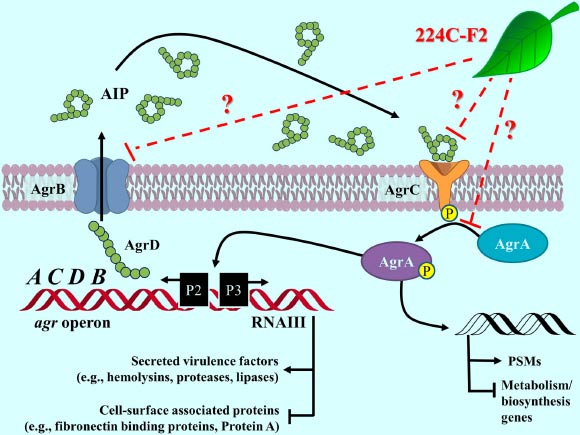Leaves of the European chestnut (Castanea sativa) contain ingredients with the power to block the virulence and pathogenesis of Staphylococcus aureus without detectable resistance, a new study has found.

The European chestnut (Castanea sativa), also known as the sweet chestnut, is a species of flowering plant in the family Fagaceae, native to Europe and Asia Minor, and widely cultivated throughout the temperate world. The tree attains a height of 100 feet (30 m). It has rugged, grooved bark and glossy, serrate, oblong-lanceolate leaves up to 11 inches (28 cm) in length. Image credit: Willow, Germany / CC BY-SA 3.0.
Rather than killing Staphylococcus aureus, the chestnut leaf extract – rich in oleanene and ursene derivatives (pentacyclic triterpenes) – works by taking away bacteria’s weapons, essentially shutting off the ability of the bacteria to create toxins that cause tissue damage.
“We have demonstrated in the lab that our extract disarms even the hyper-virulent MRSA (methicillin-resistant Staphylococcus aureus) strains capable of causing serious infections in healthy athletes,” said Dr Cassandra Quave of Emory University, lead author on the study, published in the journal PLoS ONE.
“At the same time, the extract doesn’t disturb the normal, healthy bacteria on human skin. It’s all about restoring balance.”
The scientists steeped chestnut leaves in solvents to extract their chemical ingredients.
They produced an extract of 94 chemicals, of which ursene and oleanene based compounds are the most active.

Schematic of the Staphylococcus aureus accessory gene regulator system. Dr Cassandra Quave of Emory University and co-authors report the quorum sensing inhibitory activity of the chestnut leaf extract against all Staphylococcus aureus accessory gene regulator (agr) alleles. Image credit: Quave CL et al.
Tests showed that the extract inhibits the ability of Staphylococcus aureus to communicate with one another, a process known as quorum sensing. MRSA uses this quorum-sensing signaling system to manufacture toxins and ramp up its virulence.
“We were able to trace out the pathways in the lab, showing how our botanical extract blocks quorum sensing and turns off toxin production entirely,” Dr Quave said.
A single dose of the extract, at 50 micrograms, cleared up MRSA skin lesions in lab mice, stopping tissue damage and red blood cell damage.
The extract does not lose activity, or become resistant, even after two weeks of repeated exposure.
And tests on human skin cells in a lab dish showed that the botanical extract does not harm the skin cells, or the normal skin microflora.
_____
Quave CL et al. 2015. Castanea sativa (European Chestnut) Leaf Extracts Rich in Ursene and Oleanene Derivatives Block Staphylococcus aureus Virulence and Pathogenesis without Detectable Resistance. PLoS ONE 10 (8): e0136486; doi: 10.1371/journal.pone.0136486







